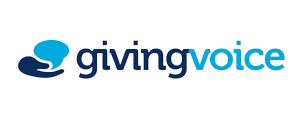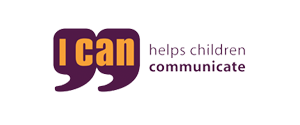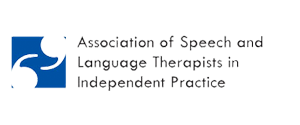Motor speech difficulties
Motor speech difficulties is the term used to describe problems with producing speech due to muscle control, weakness, paralysis, incoordination or speed of movement. Impaired or restricted muscle movement and coordination can cause difficulties in producing the correct sounds for speech. This can make it difficult for the child to be understood by others.
Our speech and language therapists can assess your child’s speech production and speech muscles to see what is causing the difficulty, as well as establishing how this impacts your child’s speech and communication abilities at home and school. Our speech and language therapists will then work with you and your child’s school to create a therapy programme that improves your child’s difficulties.
Speech and language therapy can increase speech sound intelligibility in your child as well as strengthening and increasing coordination of the muscles used in speech. Speech is made up of several aspects such as muscle movement to create articulation, respiration and prosody.
Our speech and language therapists will look at all aspects of speech production including:
- Muscles used in speech e.g. lips, tongue, jaw, hard and soft palate.
- Respiration.
- Phonation.
- Articulation.
- Prosody.
- Resonance.
Muscles used in speech
The oral muscles used in producing speech includes, lips, teeth, jaw, tongue, hard palate and soft palate. They are important in speech as they allow sounds from the larynx to become distinguished speech sounds. The different movements of each muscle can create a different sound, for example, moving your upper teeth over your bottom lip makes the sound ‘f’ whereas using the tip of your tongue to touch your alveolar ridge can create the sound ‘t’. Difficulty with moving these muscles or imprecise coordination of the muscles can cause unintelligible speech. A speech and language therapist can help with increasing the level of intelligibility by providing exercises and therapy to increase coordination, strength and range of movement.
Respiration
Speech is produced using the air in exhalation; this is the process of breathing out. In the process of respiration air is breathed in from the mouth or the nose and then enters the trachea (windpipe) down to the lungs, where the diaphragm contracts and rib cage elevates, enlarging the thorax. This creates a lower pressure in the lungs compared to the atmospheric pressure around us. The pressure is equalised by the inflow of air. This half of the respiration process is called inhalation. During exhalation the pressure in the lungs is increased by the reduction of the thorax cavity as the rib cage moves down and the diaphragm relaxes. As the pressure is lower in the lungs is higher than atmospheric pressure air flows out the body to equalise the pressure. The air that is breathed out is the air used in speech.
Problems with breathing can make it more difficult and tiring for children to partake in a conversation, speak loudly or use their voice for a long time. Our speech and language therapists provide breathing exercises and therapy techniques to reduce the level of difficulty and increase the volume and length of conversations.
Phonation
Phonation, also known as voicing, is the process where air is pushed through the vocal tract to the larynx where the vocal folds vibrate to turn the air into audible vibrations. There are two different types of sounds; voiced and voiceless. Voiced sounds are produced through the vibration of the vocal folds, such as d, z, v. Voiceless sounds do not require the vibration of vocal folds and are produced when the vocal folds are at rest, such as f, p, and t. Difficulty with voicing can result in sounds sounding the same as some sounds are articulated in the same way with only voicing to differentiate them, for example, f and v. Our speech and language therapists can use therapy activities to increase your child’s range of speech sounds by teaching them to differentiate between voiced and voiceless sounds.
Articulation
Articulation is the production of different speech sounds, for example, consonants and vowels using the different muscles in the mouth. There are two different aspects of articulation:
Place of articulation
This is the description of the different places in the mouth used to produce sounds. The sound ‘k’ is described as a velar sound as it is made at the back of the mouth near the velum (soft palate).
Manner of articulation
This is the different ways parts of the mouth move to create different sounds. The sound ‘p’ is described as a plosive. A plosive is a sound that is made by disrupting the airflow by creating a blockage in part of the mouth to build up pressure and stopping air from coming through. The air is then allowed through and the sound is made.
Difficulty with making sounds can make a child unintelligible to others as they may start to change the sound, substitute the sound, add another sound or leave it out completely. Our speech and language therapists can make your child more intelligible to others by providing therapy that improves each individual speech sound your child struggles to produce.
Prosody
Prosody in speech refers to rhythm, stress, pitch and intonation pattern. It helps to reflect the emotion of the speaker and the form of the utterance spoken, for example, a question or a statement. It also portrays other aspects of language that cannot be demonstrated through vocabulary and grammar, for example, sarcasm or irony. Difficulties with prosody can make a child sound monotonous, uninterested or appear to lack emotion in their speech. During a conversation this can cause their conversational partners to become confused, offended or upset. Our speech and language therapists help children to use their voice in different ways and provide exercises to vary their pitch.
Resonance
Resonance is the term used to describe the way airflow for speech moves through the oral and nasal cavity. During speech, air should move through the oral cavity except for when producing sounds ‘m’, ‘n’, and ‘ng’. To do this the velum (soft palate) moves to the back of the throat and blocks the passage between the nose and the mouth. A resonance disorder occurs when there is abnormal or inconsistent movement, an opening, or an obstruction that disrupts normal airflow. This can result in hypo-nasal or hyper-nasal speech, nasal air emission, weak or omitted consonants, phoneme specific nasal emission, compensatory speech errors or short utterances. Speech and language therapy can help a child use their tongue lips and velum correctly and help children to produce sounds in the correct manner. li
Speech and language therapy assessments for motor speech difficulties
Speech and language therapists can use a range of assessments to diagnose motor speech difficulties in children.
A speech and language therapy assessment will cover assessment of all the different aspects of speech including assessment of speech muscles, respiration, phonation, articulation, prosody and resonance.
The outcome of assessment will show:
- Identification of specific motor speech difficulties.
- Identification of the cause of the motor difficulties.
- Identification of the impact of the difficulties on your child’s speech and communication.
- Identification of the impact of the motor speech difficulties on your child’s activity and participation in daily life.
Assessments available for motor speech disorders include:
- Speech assessment
- South Tyneside Assessment of Phonology
- Oro-motor assessment
Speech and language therapy for motor speech difficulties
Speech and language therapy can increase the speech and communication skills of a child who has motor speech difficulties.
Suitable therapy for children with motor speech difficulties include:
- Advice, training and strategies to parents, professionals and siblings
- Augmentative and Alternative Communication
- Individual therapy
- Speech therapy
- Group therapy
Benefits of speech and language therapy
Speech and language therapy can be of great benefit for children with motor speech difficulties, as it can improve children’s production of various speech sounds as well increase clear speech making it easier for others to understand what the child is trying to say. Benefits of speech and language therapy for motor speech difficulties include:
- Increased intelligibility.
- Increased levels of communication in the child.
- Reduced levels of frustration.
- Increased levels of self-esteem.
- Increased activity and participation.
- Better quality of life.
Our speech and language therapists can provide articulation therapy as well as breathing exercises that can make your child more intelligible to others. This can increase their participation in activities in school that requires speech.
Conditions associated with motor speech difficulties that SLT for Kids commonly work with
Problems with motor speech difficulties are usually the result of a primary condition. Our speech and language therapists often assess and give therapy to children who have motor speech difficulties as a result of:
- Dysarthria
- Developmental verbal dyspraxia
- Cleft lip and palate
- Cerebral palsy
- Down's syndrome
- Stroke
- Acquired head / brain injury
Dysarthria and developmental verbal dyspraxia are often the most common causes of motor speech difficulties in children. Our speech and language therapists can increase the level of intelligibility and increase muscle control and coordination through therapy.
Summary
If your child’s speech and communication is being impacted upon due to motor speech difficulties in any part of the speech process, our speech and language therapists can provide assessments and therapy to reduce the levels of difficulty they are experiencing and enhance their participation in activities around home and school.
What to do next:
Our speech and language therapists will provide a comprehensive assessment and ongoing therapy for motor speech difficulties. If you think that your child has motor speech difficulties or your child has been diagnosed with dysarthria or developmental verbal dyspraxia please email office@sltforkids.co.uk or call 0330 088 2298.








